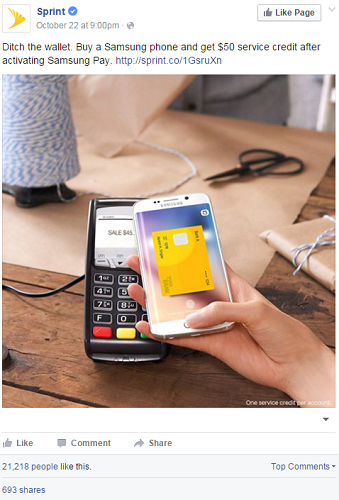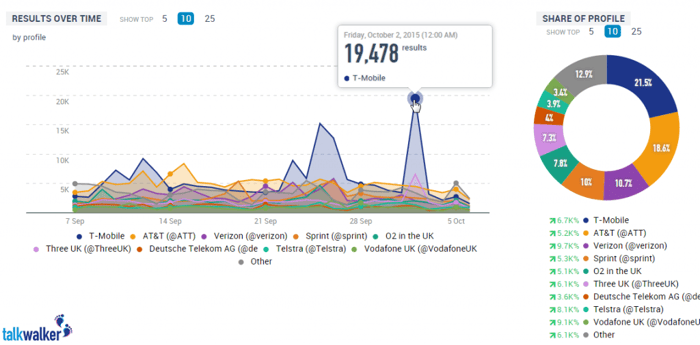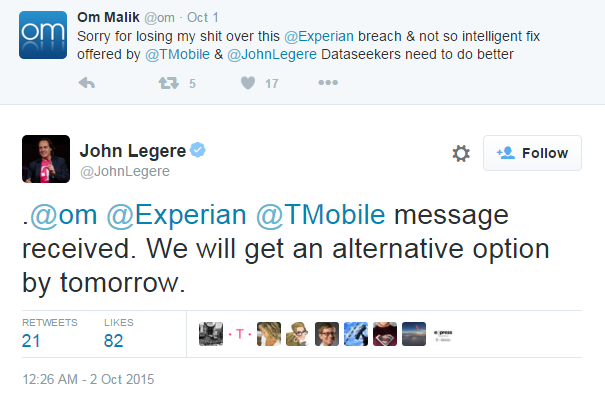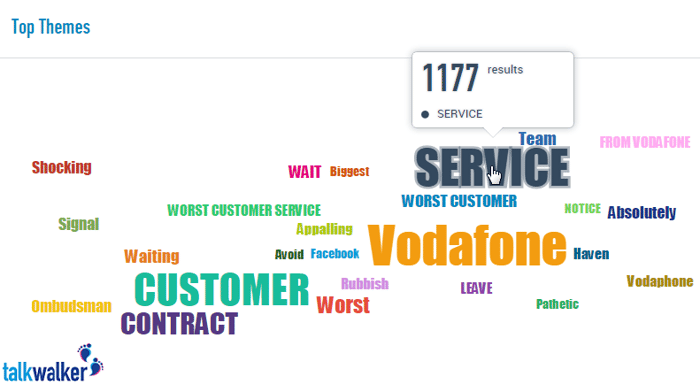For mobile operators present on Facebook, the graphic above shows that visual content – pictures and videos – created the most engagement for US brands like AT&T, while link posting attracted the attention of Sprint’s Facebook fans.Customers take to social media for a variety of reasons: product reviews, price comparisons, and increasingly, customer support via social media. With this shift towards social media support, tracking customer conversations as well as replying to customer inquiries and engaging with them is increasingly important for business success.
With social customer service becoming so essential for business success in the telecom industry, how many providers actually make use of the opportunities that social media offers?
In our latest case study, we analyzed about 3 million online mentions of around 16 of the world’s best known mobile operators. Using Talkwalker’s advanced social media analytics we found out which telecom operators understand the value of social media, and what other players in telecoms and other industries can learn from them.
Here are some of our key findings.
1. Use Visuals to Engage with US Customers, But Opt For Text to Charm Europeans
In order to engage with their audience, mobile providers need to choose the content type that works best for each of their channels.
Visual content drove engagement for most mobile brands on Facebook.
For mobile operators present on Facebook, the graphic above shows that visual content – pictures and videos – created the most engagement for US brands like AT&T, while link posting attracted the attention of Sprint’s Facebook fans.

In contrast, Facebook fans of European brands like Bouygues and Vodafone were more likely to engage with text content rather than visuals:
-4.png?width=473&height=459&name=Bouygues_Telecom%20(1)-4.png)
2. Spot Issues in Real-Time
News and current developments are constantly discussed on social media and the mobile industry is no exception.

A breakdown of Twitter mentions shows T-Mobile and AT&T as the most discussed brands
A look at Twitter mentions for different mobile providers shows a significant spike for T-Mobile in early October – right when news broke that the company had become the victim of a security breach, with the data of millions of customers stolen.
Their immediate crisis communication spread on social media and this help helped them to immediately reassure their customers and protect their reputation online. The fact that the answer came from T-Mobile’s CEO only helped to enhance the impact.

3. Do Not Forget About Offline
For other providers, the conversation had a different focus. A look at the theme cloud for all negative mentions on the Facebook page of Vodafone UK shows one clear issue: customer service.

With this topic driving so many conversations, the share of negative sentiment for Vodafone on Facebook rose to 36% – a clear indicator of the impact bad service offline can have on a company’s online reputation.
Social media analytics is a great way for mobile operators to understand their customers, their issues and concerns, but also the things that keep them happy.
For more insights into which mobile brands have developed the most successful social media strategies and how they did it, take a look at our full case study here:




